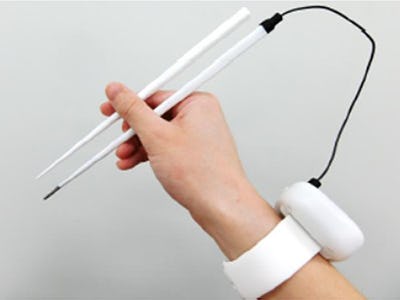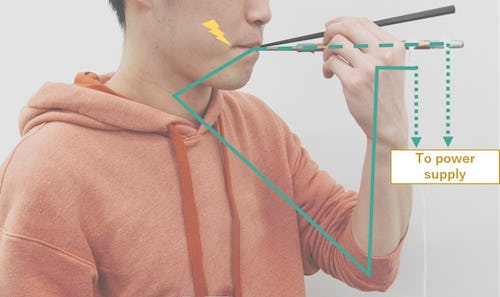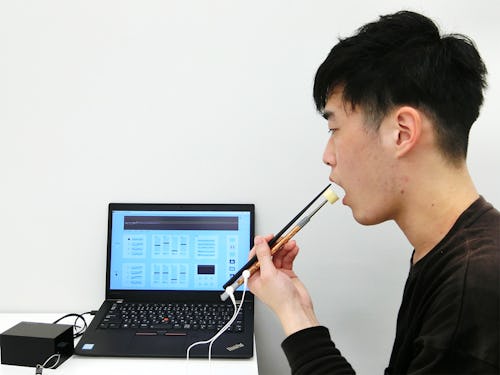
Taste is just an illusion. Researchers at Meiji University and Kirin Holdings developed a pair of chopsticks that can enhance the saltiness of food through a weak electric current. If you’re apprehensive about lightly shocking your tongue for more flavor, that’s totally understandable, but the researchers said the electricity is so weak that it’s not enough to electrocute you.
The results could be worth the somewhat concerning approach. According to the research results, the chopsticks made for a 1.5 times increase in the saltiness perceived for those on a low-sodium diet. In other words, if you were to eat something with 30 percent less salt in it, you wouldn’t even notice a difference in taste if you were using these chopsticks.

If those results aren’t enough to convince you, there’s always the looming danger of heart failure and kidney disease that comes from eating too much salt.
Testing them out —
In clinical trials for the chopsticks, the researchers tested 36 men and women who were between ages 40 and 65 and on low-salt diets. The chopsticks would use an electric current to change the function of the ions in salt and MSG to make the tastes seem stronger or weaker.

Most of the tests were conducted using gel samples with varying degrees of saltiness, but the researchers also went with reduced-sodium miso soup for a more real-world example. Some of the participants even reported more richness, sweetness, and overall tastiness when using the chopsticks for the miso soup.
Shocking utensils —
Kirin and Meiji University are saying that their device is the first in the world to result in enhancing salty taste through electrical stimulation, but, a professor at the National University of Singapore had a similar idea back in 2018 that produced saltiness, sourness and bitterness without anything else.
Still, Kirin and Meiji University is hoping the device will help reduce the amount of salt Japanese citizens use by at least 20 percent. The joint researchers also said they’ll keep developing new devices for healthier eating habits and could potentially apply this chopstick technology to other utensils like spoons or bowls.







